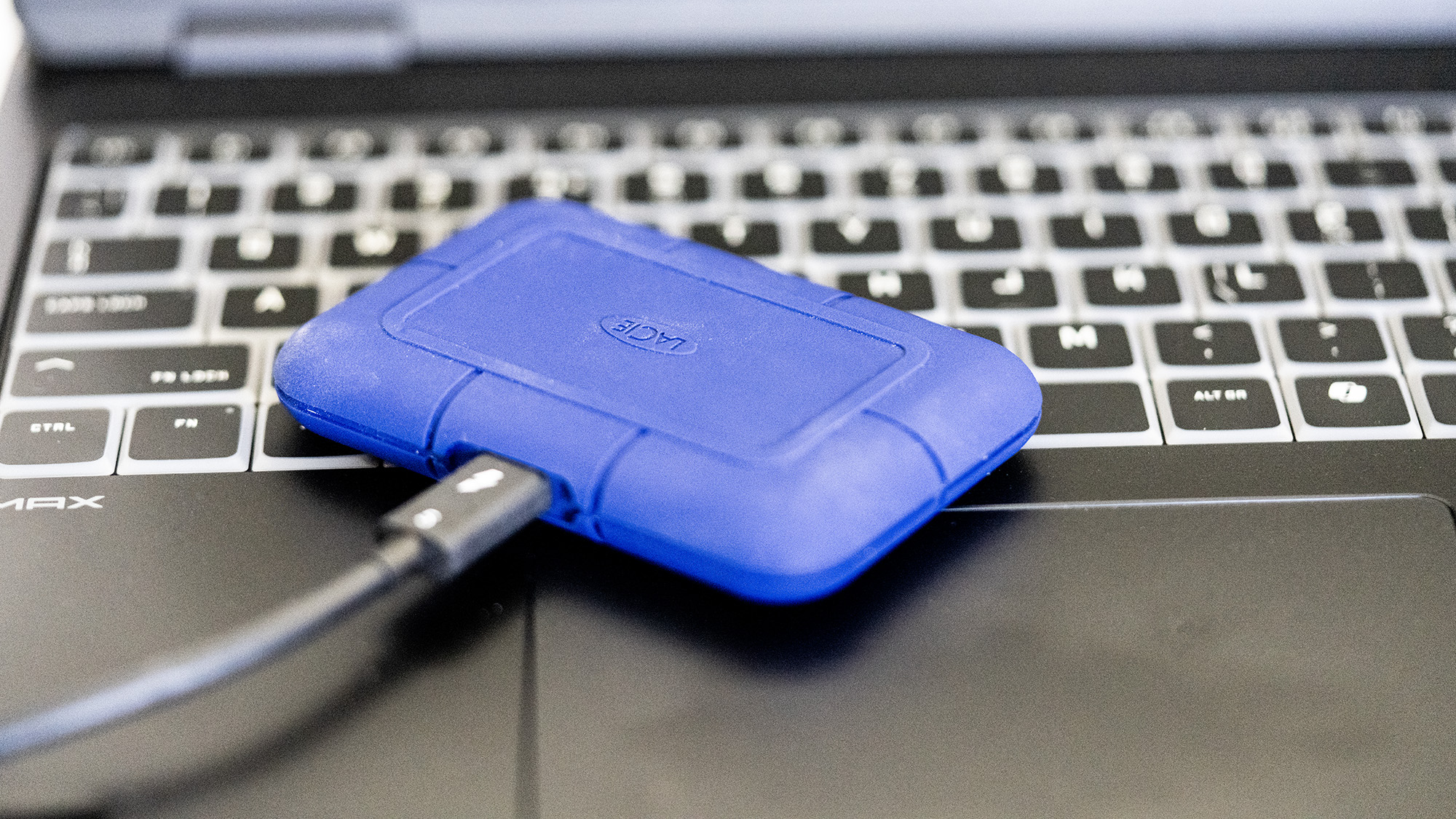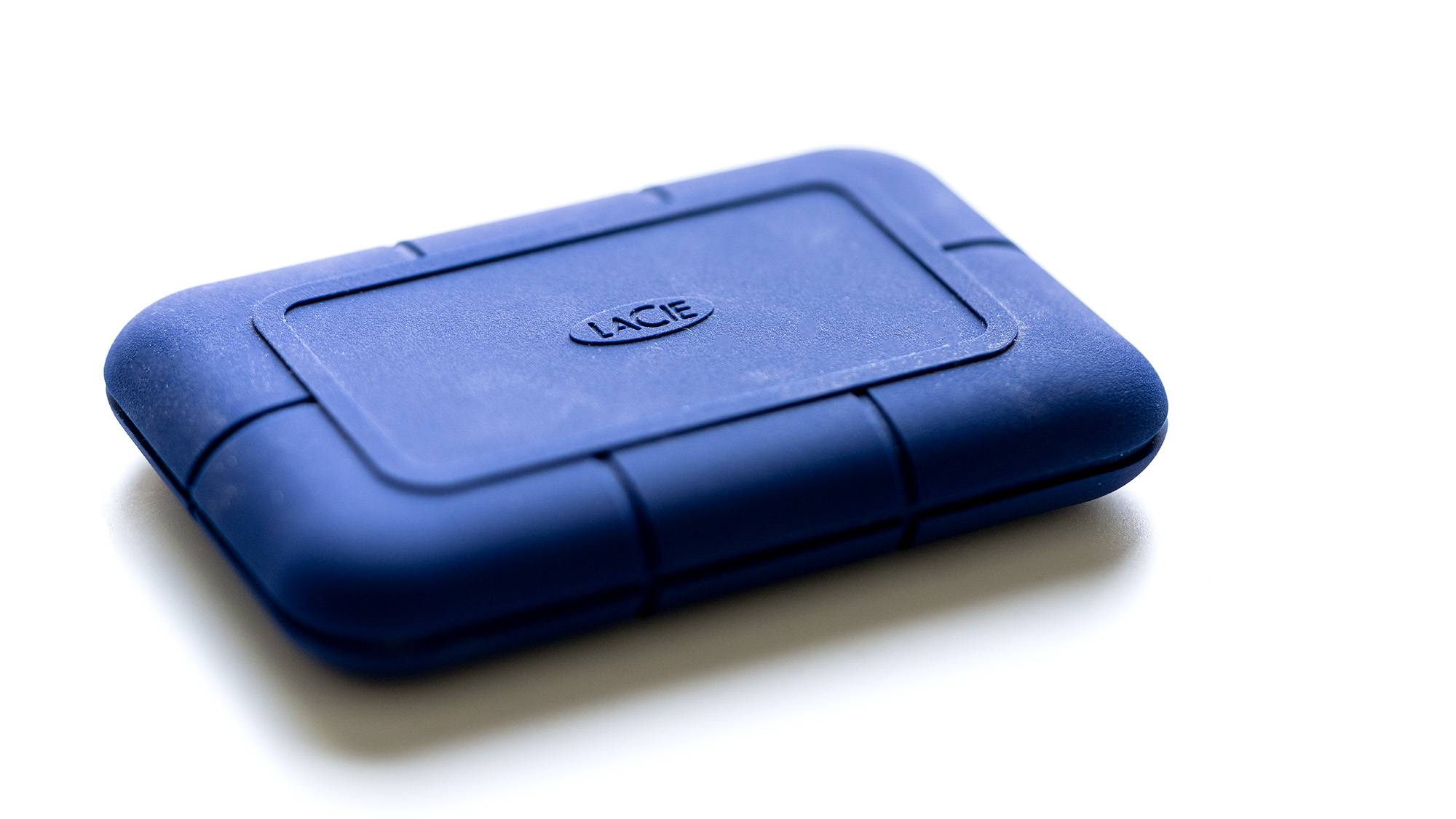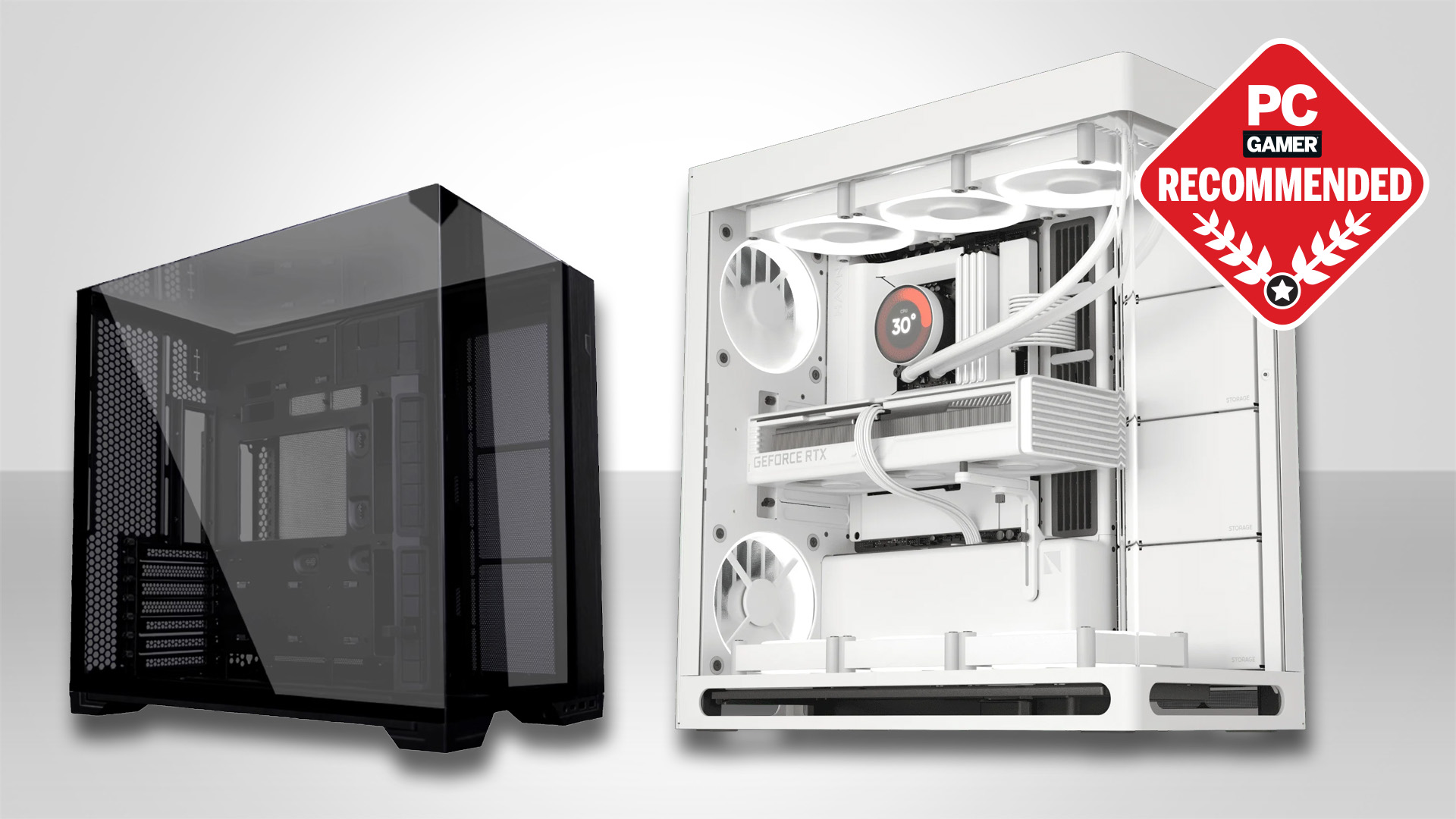Our Verdict
The LaCie Rugged Pro 5 is ridiculously fast, and a beautiful piece of design and engineering. There's a lot to love about it, if you’re out filming in hostile locations. However, as a place to store your games, it makes no sense at all.
For
- Fast
- Rugged
- Blue
Against
- Expensive
- Unnecessary
- Slower than you’d expect on USB 3.2
PC Gamer's got your back
The word ‘pretty’ isn’t one that comes up too often in PC Gamer. The games themselves are often full of monsters designed to be as unappealing as possible, while the lumpen protagonists are seldom any better. Games like Infinity Nikki and the cosy games movement are making inroads into prettiness, but that’s never going to stop the industrial design of motherboards and GPU cards from allowing form to follow function.
And while internal components may be utilitarian, peripherals are often worse. When was the last time you saw an attractive printer? External drives tend to be nothing more than black rectangles—though recently we’ve seen them in red and silver too—so it’s actually something of a thrill to open a package that contains a drive shaped like a little pillow, perfect for resting your head on if you’re about 12-inch tall, and which is such a pretty shade of blue that, combined with its speed, it feels as if Sonic the Hedgehog has been frozen in carbonite.
The LaCie Rugged Pro 5 SSD looks like it needs to be inflated with a little pump before you go on holiday, perhaps for use in the pool or some sort of dreadful campsite where a man with a guitar sings by a fire.
Luckily, the only in-tents thing about this drive (geddit?) is the speed at which it can transfer data. The Pro 5 comes with a Thunderbolt 5 interface, one better than the sockets on even the best motherboards and laptops we’ve seen recently outside of an Apple showroom. The latest version of the tech offers up to 120 Gbps of bandwidth in one direction, or 80 Gbps bi-directionally, twice the speed of Thunderbolt 4. It still uses the USB Type-C connectors that have been confusing people since Thunderbolt 3, even though they’re meant to make things easier.
Speaking of Thunderbolt 3, this drive doesn’t support it—you’ll need TB4, USB4 (you can try a slower USB port, but it must provide 15 W of power, which will be a stretch as USB 3.1 offers just 4.5 W), or TB5. It’s so complicated that LaCie has a whole web page up to step you through its needs. You’ll need Windows 11 23H2 or higher too, or a Mac running Sequoia if that’s more your thing.
Obviously, the best speeds will come from connecting it to a TB5 port, and it’s because of the relative scarcity of Thunderbolt 5 kit that this drive has been sitting on my shelf for over a month, waiting for a suitable computer to come along to test it with. If you’re going to test the fastest drive, you’re going to want to put it in the fastest port, just as you wouldn’t put a Crucial T705 in a PCIe 3.0 slot.
Inside the LaCie Rugged Pro 5’s box is precisely one accessory—a very short cable. It’s probably meant for Mac users who keep their computer on their desk, or to dangle from an iMac, but if your tastes run more to towers then it’s just not going to be long enough to reach around the back. Luckily, you can pick up a 1m Thunderbolt 5 cable from Amazon for the low price of £37, or £70 if you buy it from Apple. The 4 TB version of the LaCie drive is $550, so what’s a little more on top?
Keep up to date with the most important stories and the best deals, as picked by the PC Gamer team.
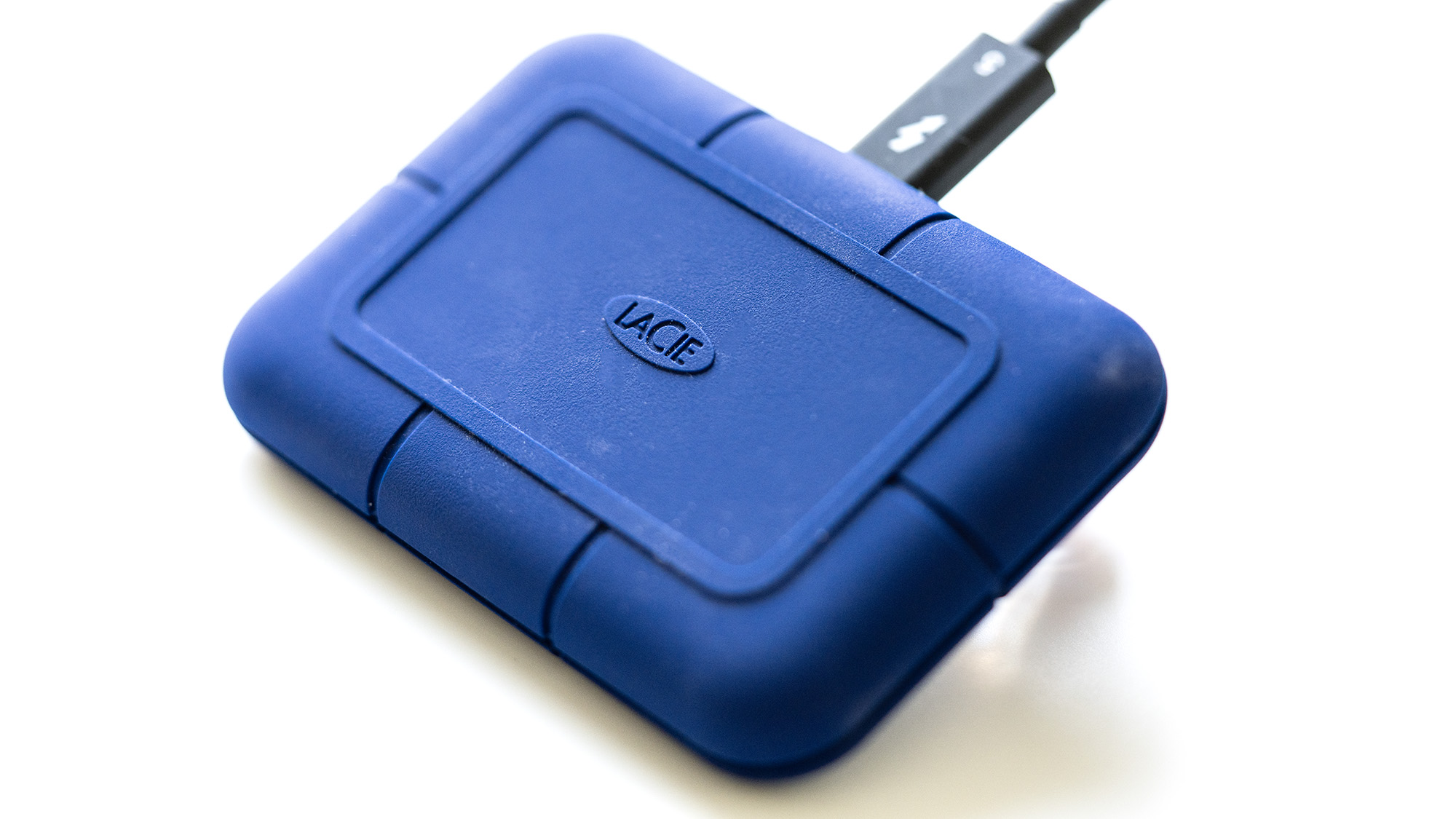



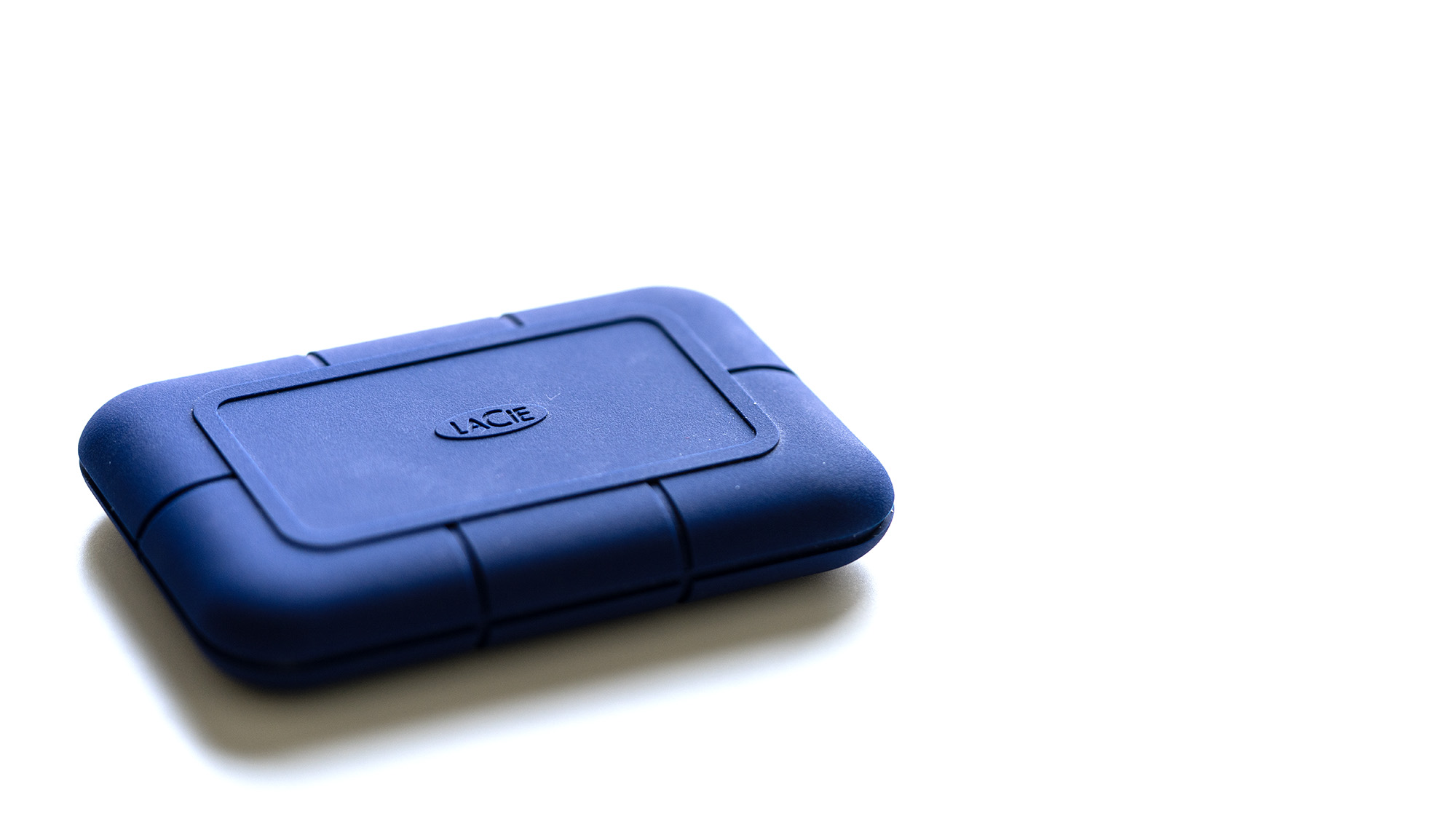
LaCie, which is owned by Seagate, reckons the drive can transfer at 6,700 MB/s read and 5,300 MB/s write. In our tests with TB5, that claim holds up, with AmorphousDiskMark (a CrystalDiskMark-alike that runs on a Mac, as this is where the majority of TB5 ports are to be found at the moment) showing peak read speeds of 6956.33 MB/s and writes of 5272.78 MB/s. Which is pretty good, though we did notice the drive getting hot while it did its speedy thing.
Connecting the drive to Thunderbolt 4 means transfer rates of 3941.73 MB/s read and 2919.5 MB/s write, while USB4 brings this down to 1941.6 MB/s read and 1469.6 MB/s write. Slowest of them all was USB 3.2 10 Gbps, which popped up a warning about power draw before recording speeds of 803.5 MB/s read and 687 MB/s write.
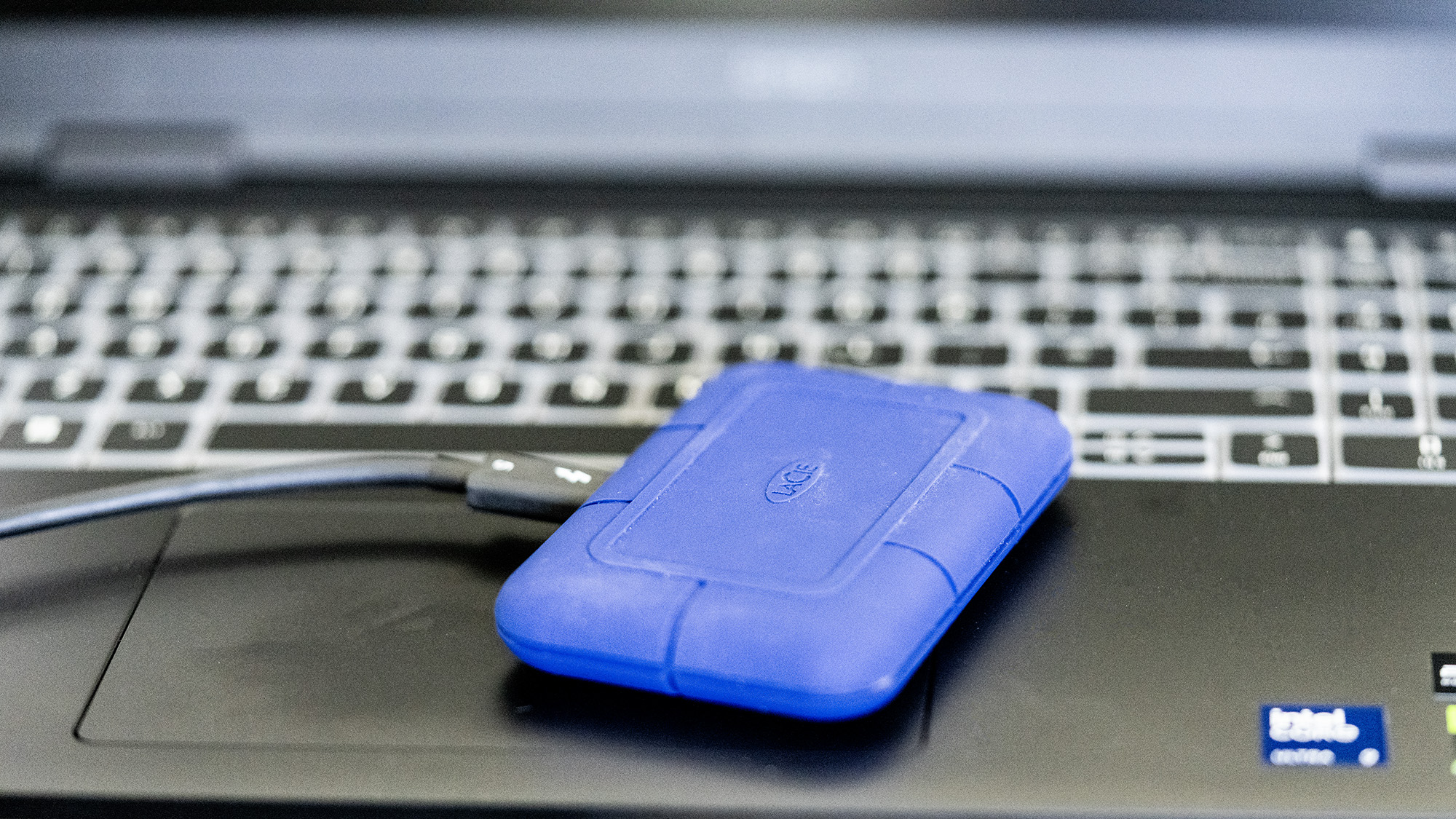
For context, the Adata SD810 is capable of 2,003 MB/s peak read, and 1,739 MB/s peak write, but requires a USB 3.2 Gen 2x2 port to do it with. USB 3.2 10 Gbps drives usually top out at about half that, the Crucial X9 being a good example, and you’ll definitely be able to find slower examples, all the way down to USB thumb drive speeds. At three times faster than its closest competition, the LaCie Rugged SSD is absolutely screaming along, though in the same way PCIe 5.0 M.2 SSDs have little effect on gaming load times, we suspect such a fast external drive might not bring about a revolution in game responsiveness. Where it will make a difference is in backing up your game installations to make space on your internal SSD, or offloading gigabytes of captured video footage after a streaming session.
✅ You spend your time hiking dusty mountain trails with a Red V-Raptor: It’s not a drive made for storing your Steam library on, though it will do this magnificently well.
❌ Literally anything else will do: If the drive is going to spend its life in nothing worse than a dusty bedroom, spend a tenth of the money on something else.
As it’s a drive with ‘Rugged’ in its name, you might expect it to be able to stand up to some punishment. The Pro 5 is IP68 rated for ingress protection, which is the same as many modern smartphones that can stand up to a dunk in the pool or a good wash as long as it’s not too deep or for too long. The USB-C port is an obvious point of entry for water, and while I wasn’t going to take it in the bath with me to test it, as the drive is intended for people who make 8K documentaries in deserts I’m gonna go out on a limb and suggest it’s sealed.
This isn’t a drive for gamers, exactly, and we’re experiencing the same diminishing returns as we do with PCIe 5.0 SSDs that plug into the latest motherboards. If you can get your hands on a gaming laptop with Thunderbolt 5 ports—MSI will sell you a Titan 18 HX Dragon Edition Norse Myth that’s equipped with them for £6,200—then an extra 4 TB of supremely fast storage may be worth the cost. For the rest of us, loading times from USB 3.2 Gen 2 drives are fast enough that you’re not left twiddling your thumbs.
Drives like this should perhaps be left to the desert-based documentary makers, but damn they’re fun to play with.
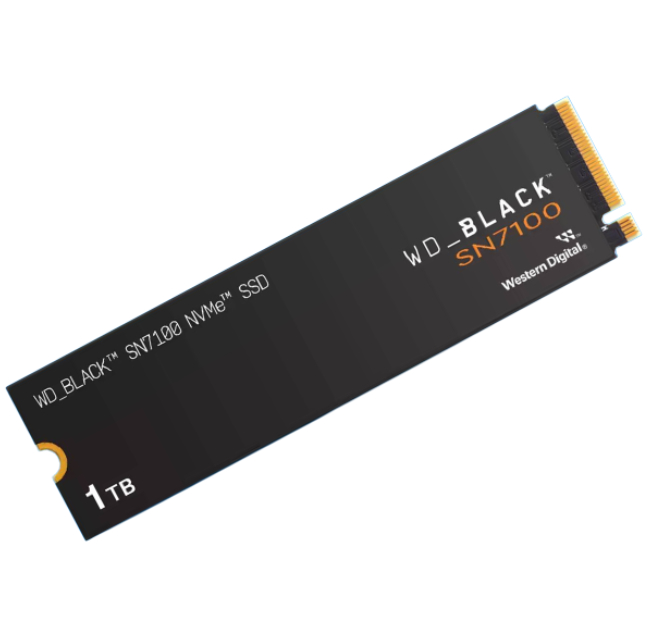
1. Best overall:
WD_Black SN7100
2. Best budget:
Lexar NM790
3. Best PCIe 5.0:
WD_Black SN8100
4. Best 4 TB:
TeamGroup MP44
5. Best 8 TB:
WD_Black SN850X
6. Best M.2 2230:
Lexar Play 2230
7. Best for PS5:
Silicon Power XS70
8. Best SATA:
Crucial MX500
The LaCie Rugged Pro 5 is ridiculously fast, and a beautiful piece of design and engineering. There's a lot to love about it, if you’re out filming in hostile locations. However, as a place to store your games, it makes no sense at all.

Ian Evenden has been doing this for far too long and should know better. The first issue of PC Gamer he read was probably issue 15, though it's a bit hazy, and there's nothing he doesn't know about tweaking interrupt requests for running Syndicate. He's worked for PC Format, Maximum PC, Edge, Creative Bloq, Gamesmaster, and anyone who'll have him. In his spare time he grows vegetables of prodigious size.
You must confirm your public display name before commenting
Please logout and then login again, you will then be prompted to enter your display name.
